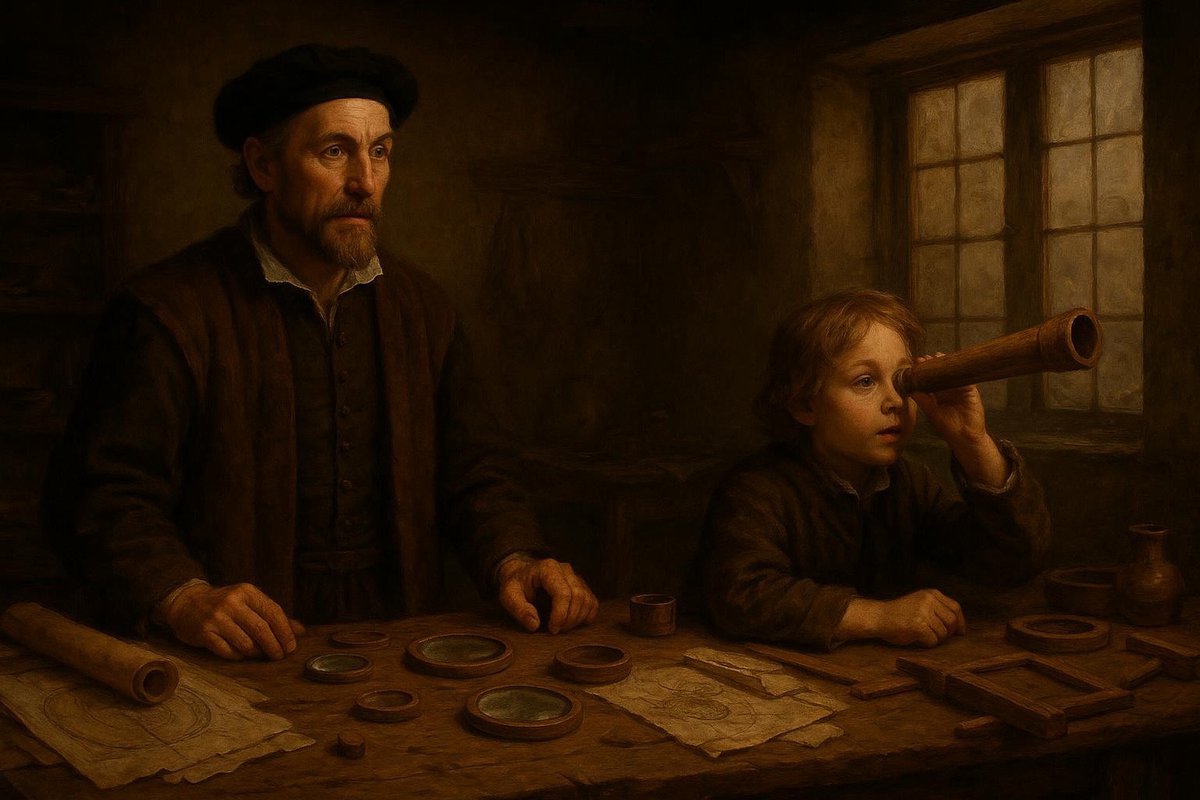
How did a simple tube with lenses transform our understanding of the universe? The invention of the telescope is not just a tale of scientific innovation, but a story brimming with curious minds, serendipitous discoveries, and a quest that redefined our place in the cosmos. While many might think Galileo Galilei was solely behind this groundbreaking tool, the journey began long before his gaze met the stars.
Unpacking the Question: Who Really Invented the Telescope?
The tale of the telescope begins in a world where the heavens were a divine canopy, untouchable by earthly hands. But curiosity has a way of bending such boundaries. It was in 1608, in the bustling city of Middelburg in the Netherlands, that Hans Lippershey, a humble spectacle maker, filed the first patent for a device that could bring distant objects closer.
- Interestingly, Lippershey’s invention was more an accident than a deliberate act of innovation.
- The story goes that a couple of children playing in his shop aligned two lenses and exclaimed how nearby the church appeared.
- Many believe Lippershey merely commercialized an idea already floating in the vibrant intellectual air of that era.
No wonder, within months, similar designs emerged from other lens makers, each claiming originality. And yet, despite the controversy, Lippershey’s application marks a pivotal moment in history.
Why did this matter? Because it ignited a race across Europe to enhance the telescope further, ultimately leading to Galileo’s hands. The social and economic climate of early 17th-century Europe—where trade, war, and navigation required better observational tools—set the perfect stage.
Surprising Facts: The Telescope’s Unlikely Journey
As time went on, the telescope’s tale twisted through unexpected turns. It wasn’t until Galileo Galilei, an Italian polymath, laid his hands on the device that its potential was truly unleashed. But what did he see that others did not?
- Galileo’s improvements transformed the telescope from a mere curiosity to a powerful instrument of discovery.
- His observations of the Moon’s rugged surface shattered the notion of celestial perfection.
- He discovered Jupiter’s moons, proving not everything revolves around the Earth.
These revelations weren’t just about new objects in the sky; they challenged the very core of geocentric ideas. “E pur si muove”—and yet it moves—Galileo reportedly muttered, alluding to the unstoppable momentum of truth.
In a world dominated by rigid philosophies, Galileo’s telescope became a tool of revolution, sparking debates that echoed in universities and churches alike. It was no small feat for a simple lens arrangement to unsettle centuries-old dogmas.
What Science Says: The Telescope’s Impact on Understanding
Fast forward to today, and the telescope continues to be our window to the universe. But what was it about Galileo’s telescopic observations that truly redefined science?
- Galileo provided empirical evidence against the Ptolemaic system, fundamentally shifting scientific paradigms.
- His work laid the groundwork for Newton’s laws of motion and universal gravitation.
- It demonstrated the value of observation over dogma, heralding the scientific revolution.
The telescope’s ability to reveal hidden truths marked a turning point in the relationship between humans and the cosmos. It allowed us to peer beyond the visible, igniting our innate wanderlust and desire to understand.
This wasn’t just about seeing far; it was about redefining what we thought was possible. The telescope became a metaphor for human curiosity, a testament to our relentless pursuit of knowledge.
What It Means for Us: Lessons From the Telescope
In the grand tapestry of human progress, the invention of the telescope is a shining thread. Its story is a reminder that innovation often springs from unexpected sources.
- The telescope was a product of its time—a blend of scientific inquiry, cultural momentum, and serendipity.
- It teaches us that curiosity, collaboration, and sometimes a bit of luck can lead to monumental breakthroughs.
- Today, telescopes are as integral to our understanding as they were four centuries ago, continuing to unravel cosmic mysteries.
Reflecting on this journey, we see a confluence of imagination, craft, and the courage to question the status quo. It’s a testament to the power of seeing beyond the horizon.
As we gaze through telescopes today, we too are participants in this centuries-old legacy, explorers in our own right. The telescope’s invention is not just a historical event; it’s a beacon guiding us toward the unknown.
The invention of the telescope is more than an account of lenses and light; it’s a story of human ambition and the power of perspective. It reminds us that the universe is vast and full of secrets, waiting to be revealed.
Fuel Someone Else’s Curiosity
Did this journey through time ignite a spark within you? Share the story of the telescope with someone who loves to wonder, and let the ripple of curiosity spread. Together, we can keep asking the big questions and see where they take us!

Leave a Reply